The Trip's the Thing: The Story of The Ophelias
- Camilla Aisa
- May 9, 2022
- 14 min read
Updated: May 16, 2022
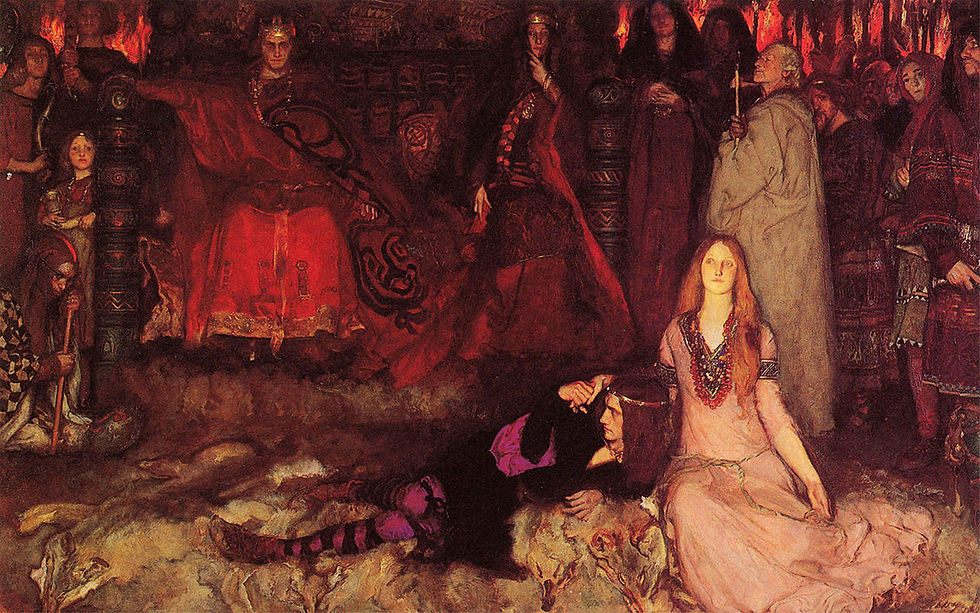
"They're not the best at what they do, they're the only ones that do what they do”, Bill Graham reportedly said about The Grateful Dead. When talking about The Ophelias, we’re tempted to steal Graham’s words.
Now, no one in their right mind would draw comparisons between The Ophelias and The Grateful Dead - if they were in fact the only ones doing what they were respectively doing, it should come as a consequence that their sound, vision and fortune would have little in common. But it just makes sense that two entities so characterised by uniqueness would both blossom, some twenty years apart, in San Francisco.
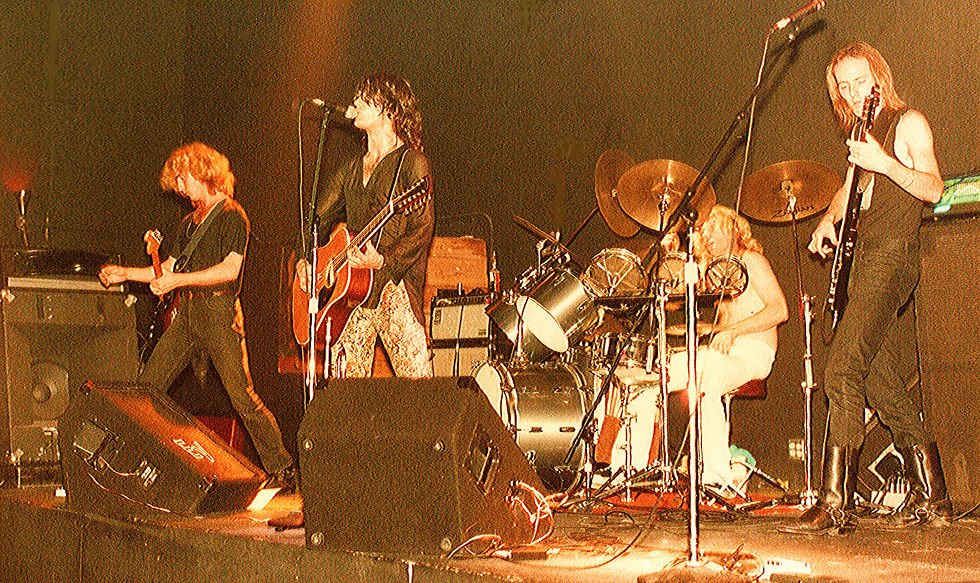
When it comes to The Ophelias, “they’re the only ones that do what they do” is no lazy assertion. It is, rather, a fitting description. The Ophelias were a continuously mutating outfit that could sound like a lost end-of-the-60s cult favourite one moment, and present themselves as godfathers of today’s all-embracing indie rock the next. Ophelias songs feel out of time and ahead of their time all at once. The Leslie Medford-led group blended psychedelic rock’s kaleidoscopic curiosity and progressive inclinations, American post-punk and English folk, modern sounds and Elizabethan delights, all in the span of a few songs (and all while ringing resolutely coherent).
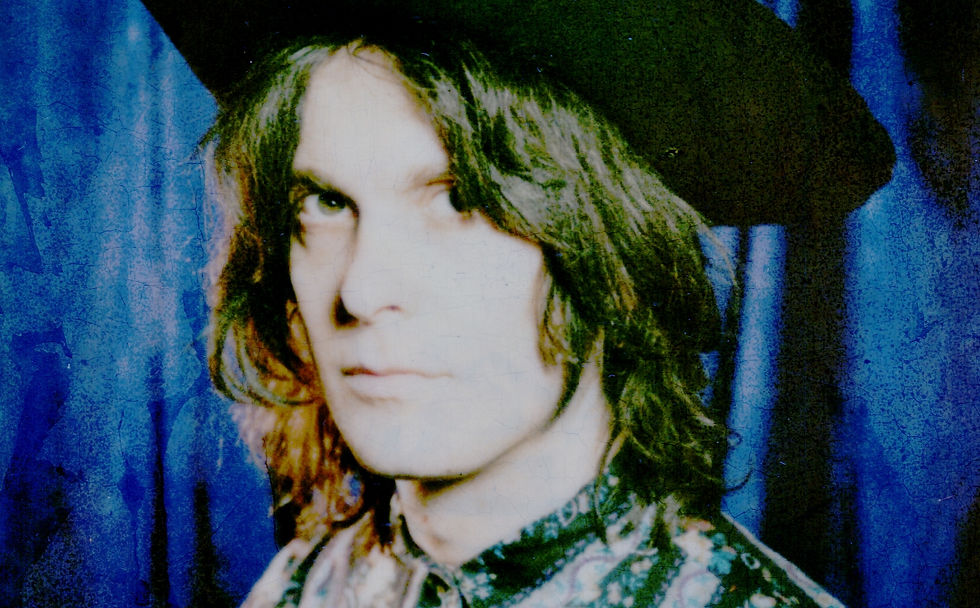
The band’s flair for multiplicity seems to reflect on its very line-up. “There are no siblings in The Ophelias, no childhood mates”, Ophelias lynchpin Leslie Medford reflects. “There were nine individual Ophelias over our five years, but only one leader and singer-songwriter, and one bassist. So, three lead guitarists, and four drummers, plus Terry von Blankers and I. All members had a lot of commonality on the macro level. It was rock and roll that brought us together, after all, and within that ocean we shared a general similarity of taste. We belonged to the same generation. It’s easy to notice we weren’t born in the same states, and that religion, science, the military and education played various roles in our upbringing - but beyond the key attributes of instrumental ability and shared musical taste, was, that An Oaf Shall Be: good-natured, easy-going, have a sense of humour and a nice personality, with bonus points awarded for obvious charisma”.
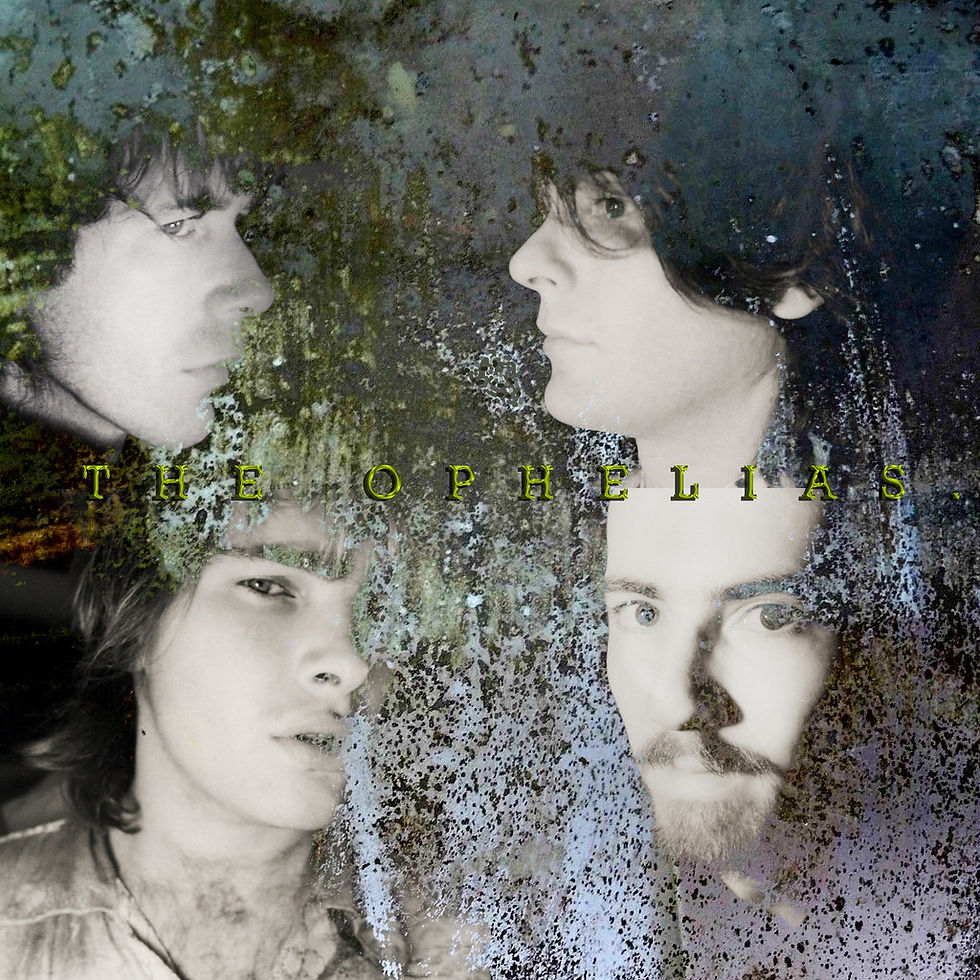
There’s a particular formation of the group that both Leslie and hardcore fans like to refer to as the ‘classic line-up’. It features, alongside Medford and von Blankers, Edward Benton on drums and David Immerglück on lead guitar. Even before joining the band, Immerglück was a fan of The Ophelias. “‘Mr. Rabbit’ had been on the radio”, he remembers. “Then Eden Unger, who played in a local band and was a friend of both Leslie and myself, brought me to see The Ophelias one night. I might be wrong, but I believe I went to see my friends in Camper Van Beethoven, and The Ophelias were opening. On the bottom of the bill there was this band no one had heard of - a trio, all peaking on LSD, no original material, they just covered Led Zeppelin’s first album completely shambolically. They were the Flaming Lips. Then The Ophelias came on, and for me it was a whole other level of sophistication in performance and writing. It was as close as I would have come to seeing David Bowie's Ziggy Stardust peak period. It was like seeing Peter Gabriel with Genesis in a city where everyone was playing half-ass punk rock. Leslie was really charismatic, the songs were incredible”.
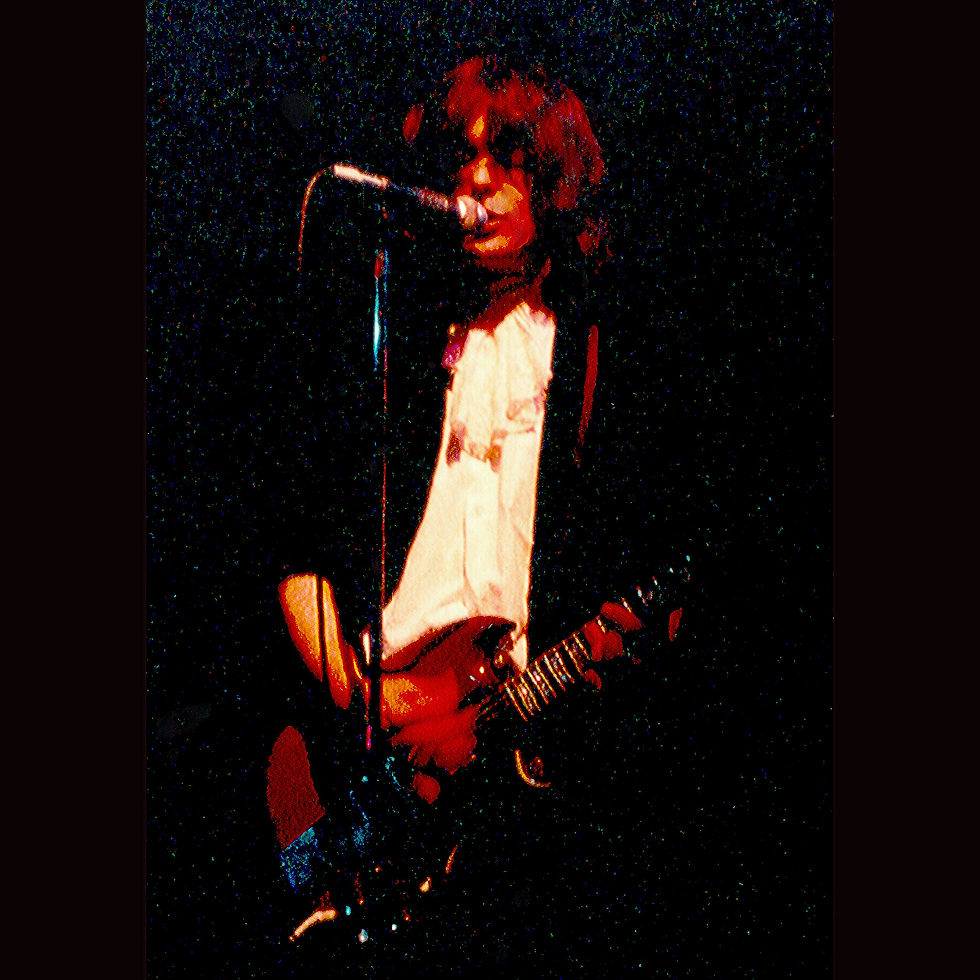
While it seemed that every band in San Francisco wanted to be the next Stooges, with every singer trying to mimic Iggy Pop, Medford led The Ophelias into a dimension that was far more unpredictable, as well as proudly literate. Everything about them stuck out, starting with their name. “She is a powerful and haunting archetype”, Leslie says of one of Shakespeare’s most modern and perpetually fascinating characters. “Her treatment by others, her expendable, undervalued status, is beautifully, subtly, exposed as perverse; but Ophelia seems honourable…and honoured and ultimately respected by the author. I extrapolated Ophelia to stand in for everyone who has been looked-past. I’m from a poor, Southern, rural background, and I stammered as a child. I, too, know what it is like to be looked past and undervalued. Most of us know the feeling. And ain’t that the story of The Ophelias in this modern world!?”, he laughs. He looks back at 1984, when he first embraced the name. “I was also smacked in the consciousness about just how rock’n’roll and psychedelic rock Ophelia was! Young, sexy, half-woman/half-child, trippy-madness, flowers, breakdown, death, suicide or misadventure (Brian Jones, anyone?), nature, paganism and Christianity combined. The 60s in a nutshell!”. Shakespeare’s Ophelia can’t help but become more meaningful with time. “She is just so redolent, memorable, pervasive, so subtly everywhere. Good band name!”, Leslie enthuses. “Tapping into Shakespeare magic is marvellous. Our band is connected to the canon in some small way. Shakespeare and Ophelia are everywhere, rock music included. And as a band you want to be ubiquitous, no?”.

But back to that momentous night, when David Immerglück first saw The Ophelias. He met Medford after the show, and it isn’t hard to picture how that went - avid record collectors instinctively recognise each other. “We spoke about obscure bands”, David recalls. “Pentangle, The Incredible String Band, Van Der Graaf Generator…these bands that most people weren't really talking about right then. I had been collecting records since I was in fourth grade. The town I grew up in had a lot of used record stores. The people who worked there would see an eleven-year old kid coming in and buying, say, a Yardbirds record. They'd ask, ‘you like that? You better check out Howlin’ Wolf’, and they'd force me to buy it. Or, if I was buying something by the Rolling Stones, they’d make me check out Chess’ blues records”. He loved to read liner notes, too. After buying a Nick Drake album he learnt about Joe Boyd’s Witchseason Productions. A world of priceless discoveries awaited next: Fairport Convention, Richard Thompson, Roy Harper, Bert Jansch, Davy Graham…this, and much more, he and Medford would bond over. “Leslie had a really fabulous record collection. We used his apartment as sort of our office, I was over there every day and we were making phone calls, writing letters to David Fricke, listening to records, going through his record collection… I didn't know much about Peter Hammill and Van Der Graaf Generator. Leslie turned me on to them in a big way”.
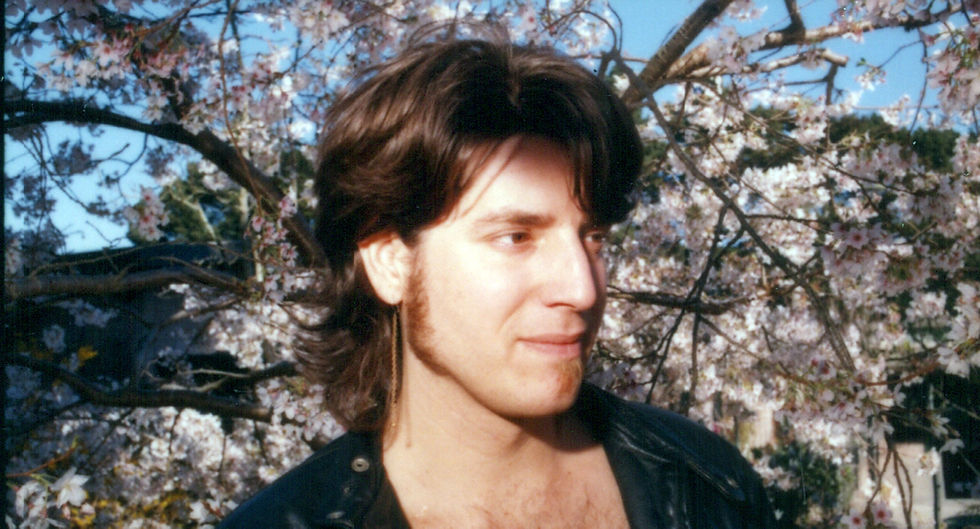
A year and a half after he first saw The Ophelias, David Immerglück found himself reading the local ads. Back then he was playing with Monks of Doom and various bands, as well as producing music for other artists. One particular ad stopped him in his tracks: The Ophelias were looking for a guitar player. “I just freaked out”, he enthuses. “I was like, I've got to be in that band. I got my friend Eden to contact them. I went to the audition and was uptight for a little while - I really wanted the gig and I wasn’t sure I had it. Then Leslie called me to meet him for coffee. It was him and Jeffrey Clark from Shiva Burlesque, we met at a cafe on Telegraph. And so Leslie declared me the new Ophelias guitar player. You could have shot me right then. You spend a lot of time as a teenager playing in bands with no financial compensation and no support network, your parents telling you ‘what are you doing? This is a terrible career!’. And here I am, finally, I really believe in this band. I can really throw myself into this, 25 hours a day, whatever it takes to make this happen”.
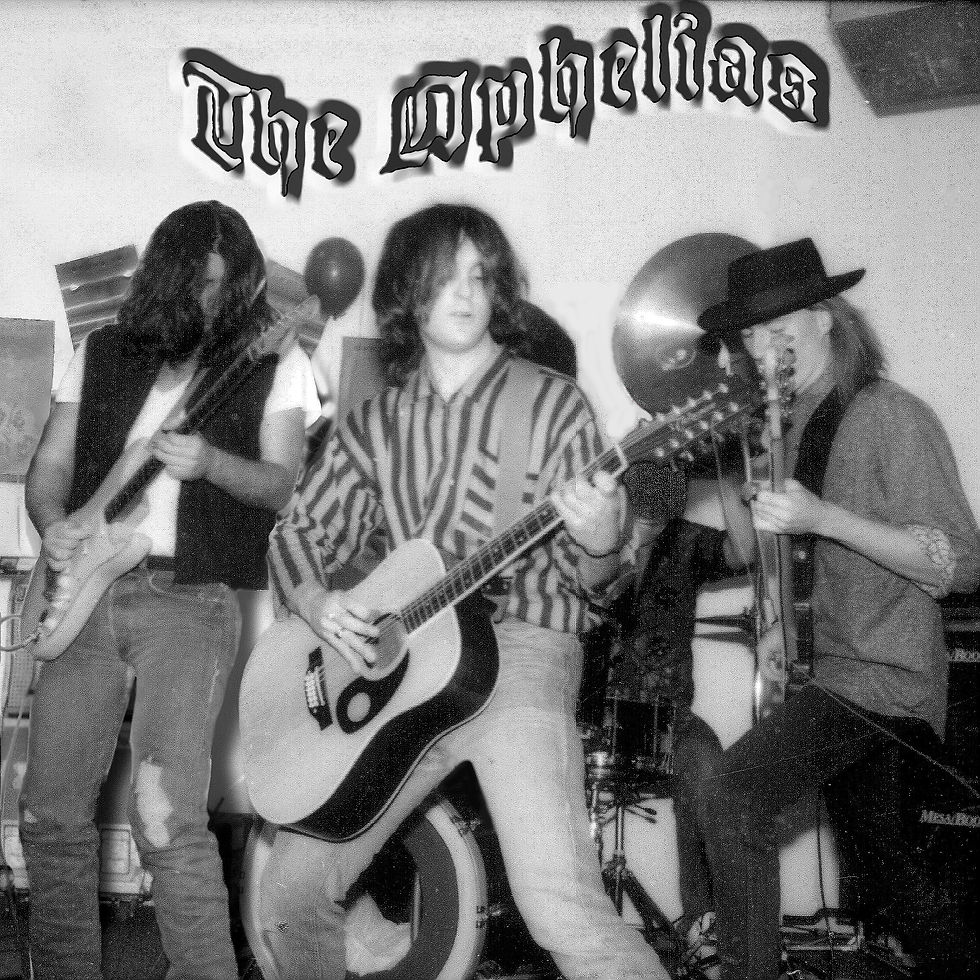
And so the classic Ophelias were formed. “Immerglück was such an upgrade on guitar that this line-up was bound for glory, even if one sets aside the additional advantages of Davy’s personality and charisma”, says Medford. “Furthermore, we all got along quite well, and did things outside of the band together, in pairs, trios, and quartet. But we all had a life outside of The Ophelias. Edward Benton was an electrician with US Navy security clearance, he liked sports, weed, and had a toddler named Matt. Terry von Blankers was finishing up a degree at the San Francisco Art Institute, had a girlfriend, a job, he was the figurehead of a sprawling apartment household on Haight Street. David Immerglück was a recording engineer, had plenty of musical side projects and was constantly networking, had homies in Berkeley, San Francisco and Santa Cruz, plus a girlfriend. As for me, I had various menial day jobs, I was chasing girls, loved spending time with psilocybin, dogs, cat and tennis”.

A deep love of records and artists from the past could ultimately prove a weakness for many songwriters. In many cases, it’ll result in uninventive emulation. Needless to say, this was not Leslie Medford’s case. His music remained unrestrained at heart. “The free-associative aspect of my lyric writing is obvious”, he reflects, “and part and parcel to many of the lyricists I most enjoyed previous to my own efforts (Lennon, Dylan, Barrett, Peter Sinfield, Jon Anderson, Hammill, Bolan, on and on) and poets I’ve loved (like Gerard Manley Hopkins). And of course I often used the just-blabber-away-while-recording-while-very-high method, later polishing the result towards something listenable/sensible/evocative over an ensuing period, also likely while very high”.
Immerglück calls their shared taste catholic: “we had a lot of reference points, we were very well-read on the history of rock music and recorded music. I saw us as co-conspirators. All was allowed. We had a voracious appetite for a lot of different styles, and equal love for it all. It was easy for me to incorporate it into our own music and see how different things could be used in those songs. It was also a challenge for me, I was engineering some of it. As we were working on such tight budgets, this was finally an opportunity to exercise any fantasy that I had about recording. The material was so strong, it just allowed me to do so”.
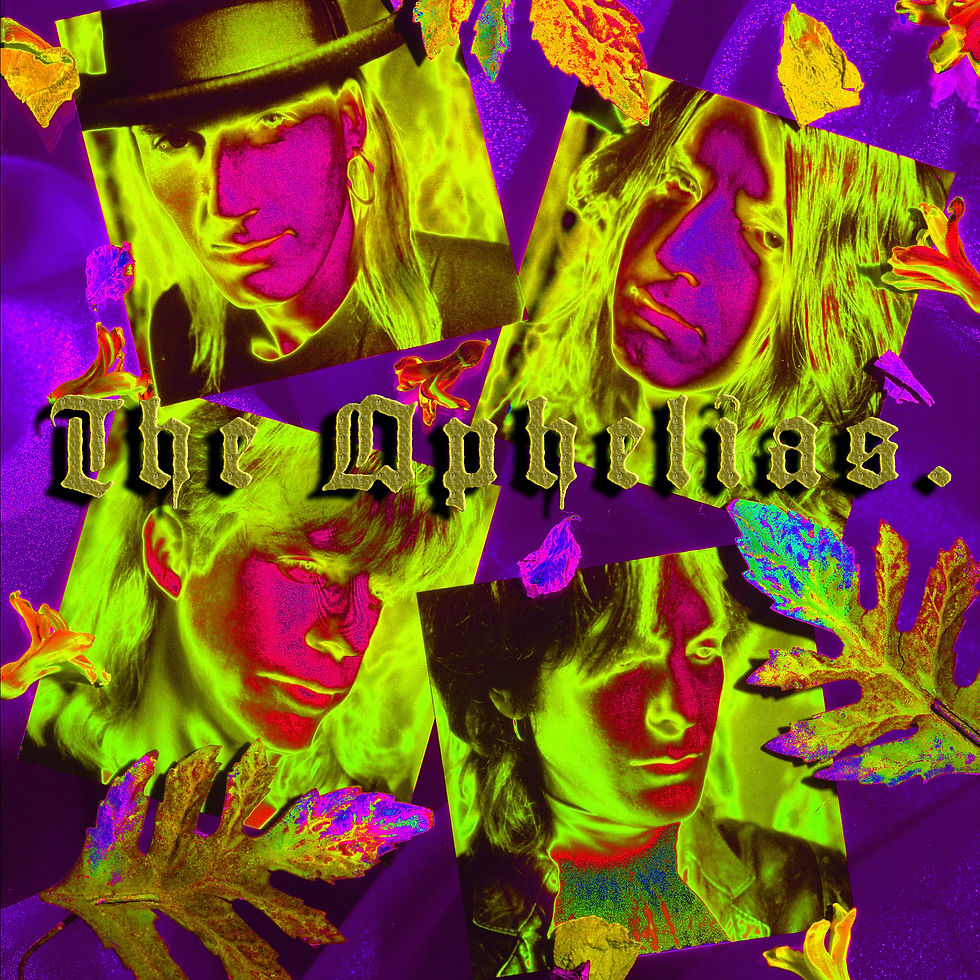
It’s hard - impossible even - to put The Ophelias’ music in a box. How can you possibly describe it without resorting to a seemingly endless list of different genres, sub-genres, moods and styles? Perhaps The Ophelias are of the most fitting representations of what the word psychedelic was supposed to mean all along. “We were an adventurous psychedelic band rubbing up against post punk”, Medford looks back. “We may have been art-rock or art-punk, because art is in it. We just made music after our inclinations, with bandmates of our choice – from the pool that applied! – without money, it should be added, and in a city of strangers - at least to me. We were in active study of the same kinds of rock’n’roll, from the Kinks to Gong to Bowie to Joy Division. Therefore, we mostly reinforced those minion commonalities. David prodded me towards the Grateful Dead and Can even more than I had thus been prodded; took me right up to the place from which I would have to go on alone. I was always championing wildly eclectic things, maybe Gordon Haskell’s lovely solo album It Is and It Isn’t, or perhaps some particular Magma prophecy! David and I were the real music collectors and adventurers in the band. But of course there was a certain commonality of taste amongst all The Ophelias, meaning all nine of us. David and I just went further up the river with it than others, and our tastes were incredibly similar. And we liked there to be melody and hooks”.
The music they made together turns the meeting of past and present (and all the different dialects of Rock they produced) into such an effortless, thrilling dialogue that one might fail to remember that, at the time, Rock was busy showing a far duller face in public. David Immerglück speaks of a sense of uneasiness: “Huey Lewis and the News, Journey and Mr. Big - all power to anyone who can have some success, but that's what the Bay Area was being represented as. As for me, I was thinking of Surrealistic Pillow, Moby Grape’s first two records - what about those? There was a time when really great albums were being made in the Bay Area. When we released Oriental Head in ‘88, I kept thinking we were making the best record that had come out of the Bay Area in twenty years, and people were going to know it. I was really forthright about it, almost annoying to some people. I still stand behind that album - I’ve made a lot of records, and that’s still one of my favourites. But the world didn't stop, and not everyone recognised that The Ophelias were one of the best bands to come out of San Francisco. It continued with the usual: awards were given to all sorts of awful people, and we didn't get that much recognition. We got some good radio play, some good press, but that was about it. We continued to be broke and struggling. That coloured my appreciation of the music at the time”.
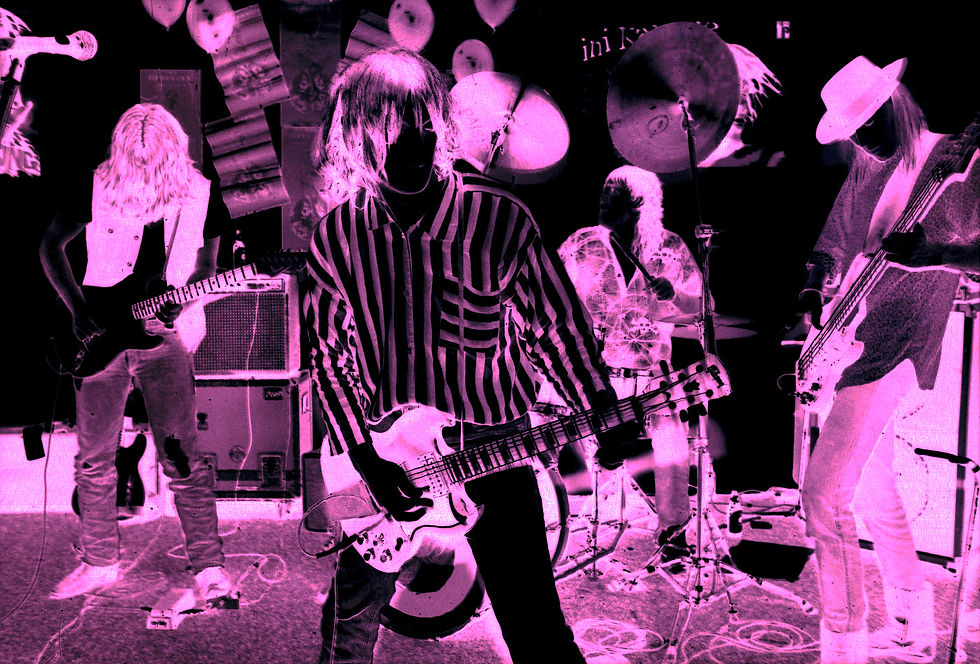
A lack of touring opportunities also didn’t help. “We could barely get out of California”, Immerglück explains. “We went north a couple of times, as far as Vancouver, and down to L.A. several times. I really thought we were going to go to Europe, because Leslie and I were so informed by a love of British psychedelia, post punk music, British folk music. I thought that the material itself would make it happen. We were on a label, Rough Trade, that was based in London. But for some reason it just never came to pass”. The Ophelias would release another LP, The Big O, in ’89 before disbanding that same year. “It was a short window”, Immerglück ponders. “But a lot of stuff happened”. He looks back at the revolution that was just around the corner: “as great as that moment was, when Nirvana hit and sold so many records, the mainstream corporation came in and just swallowed everything up. Suddenly the college radio stations had playlists given to them, MTV had its own playlist. It sort of devoured the scene that The Ophelias came out of. We didn't quite thrive, but we were able to make a bunch of records, there was a conversation happening - San Francisco was a really great petri dish to be in and even though there was no other band like us, there were curious people reading about music and wanting to see it live”.
Meanwhile, The Ophelias were no more, but Ophelias songs still resonated in Leslie Medford’s head. “Within a few years of the band’s demise I began contemplating a one-CD compendium featuring what I believed to be our strongest studio recordings”, he remembers. In the early 90s he could start declaring the mission somehow accomplished. He had cooked up something - a 19-track CD - called Bare Bodkin. “I rarely listened to, or even talked about, The Ophelias. But of course, if I became close to someone, and they expressed an interest in this rock band in my past, I had Bare Bodkin to play for them - very ceremonially! And it delighted me when I would hear it, perhaps once a year on average”. Financing for a release failed to materialise and Leslie, who wasn’t performing nor playing anymore, eventually remade Bare Bodkin (“15 tracks this time, because I thought 19 tracks were just too punishing for my average dinner guest!”). In 2015 he felt finally ready to open old boxes and catalog something like 225 cassettes. Next came photographs, posters and press clippings, as well as a fortunate meeting with tech-savvy librarian Carl Salbacka: he helped Leslie create videos for his selection of songs, and eventually proved crucial in bringing Bare Bodkin to YouTube and The Ophelias to the 21st century.
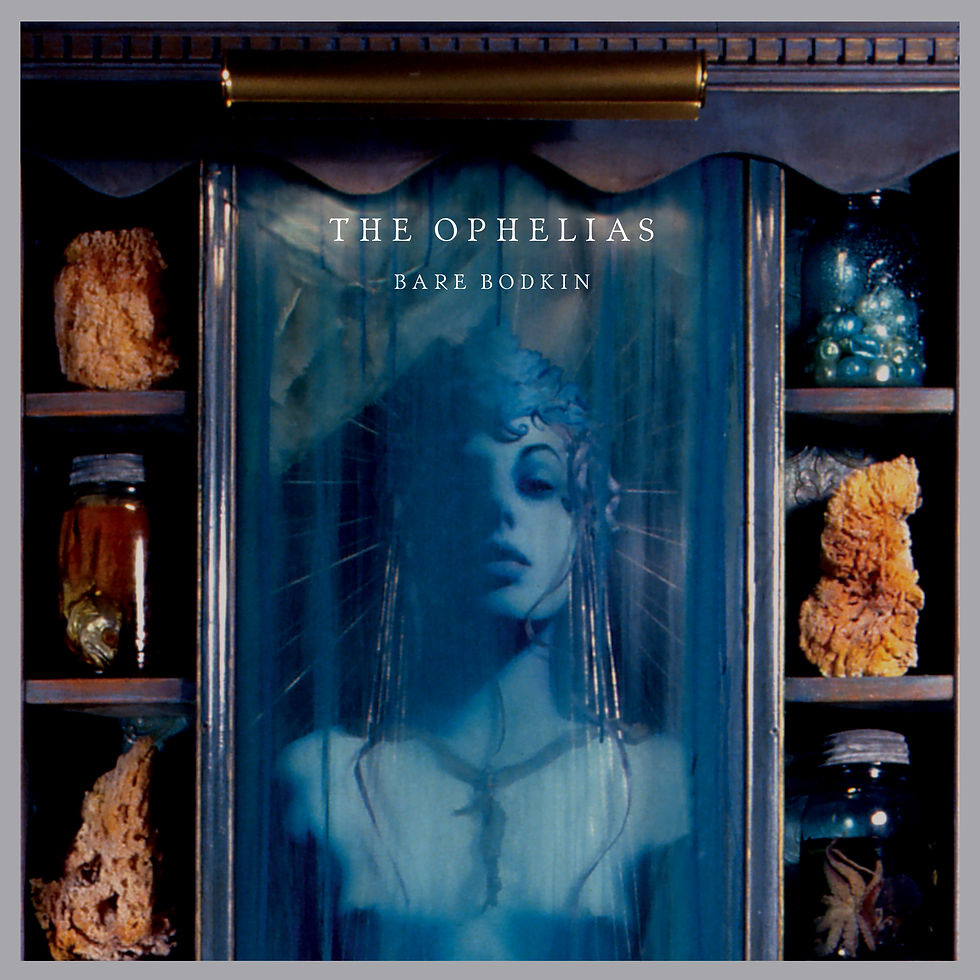
“I hadn't really heard from Leslie for almost ten years when out of the blue he sent me this Youtube link to the Bare Bodkin video album that he'd made”, David Immerglück recalls. “I clicked on it and it just blew my mind. It’s a great selection, and he put so much energy into every song. I hadn't really thought of The Ophelias in a very long time. And then he started sending me live videos of us, and we got back in touch. This was stuff from 30 years ago, I suddenly realised, and that shocked me. I still love it. It rekindled my love for The Ophelias. Despite the lack of success at the time, I really stand behind it now. I really am proud”.
Finally, it was time to introduce the streaming era to the wonderful sounds of The Ophelias. “I realised that the band had no presence on Spotify or iTunes”, Immerglück points out. “It was as if we didn’t exist, just because no one put the energy into creating an account. So I took it upon myself at that time to collect the masters. For a lot of these things the master tapes are long gone. I have a collection of multi-track tapes and stuff, but the mixed masters went to Rough Trade, and they destroyed them. I had to find sealed copies of unopened vinyl from around the world - I still hoard this stuff to this day. It's really fun for me as a record collector. I'm on Discogs: oh, a sealed copy of Oriental Head in Japan - buy it now! Oh, a sealed copy of Oriental Head in Amsterdam - buy it! A sealed copy of Oriental Head in Michigan - buy it! I did this with all the records and then I found this guy in Pasadena, who masters from vinyl to digital. That was a story in itself, but I got that done. And then I got it all up online. I still feel part of this band just doing this”.
Ed.note: However, Bare Bodkin was remastered from tape sources, not vinyl.
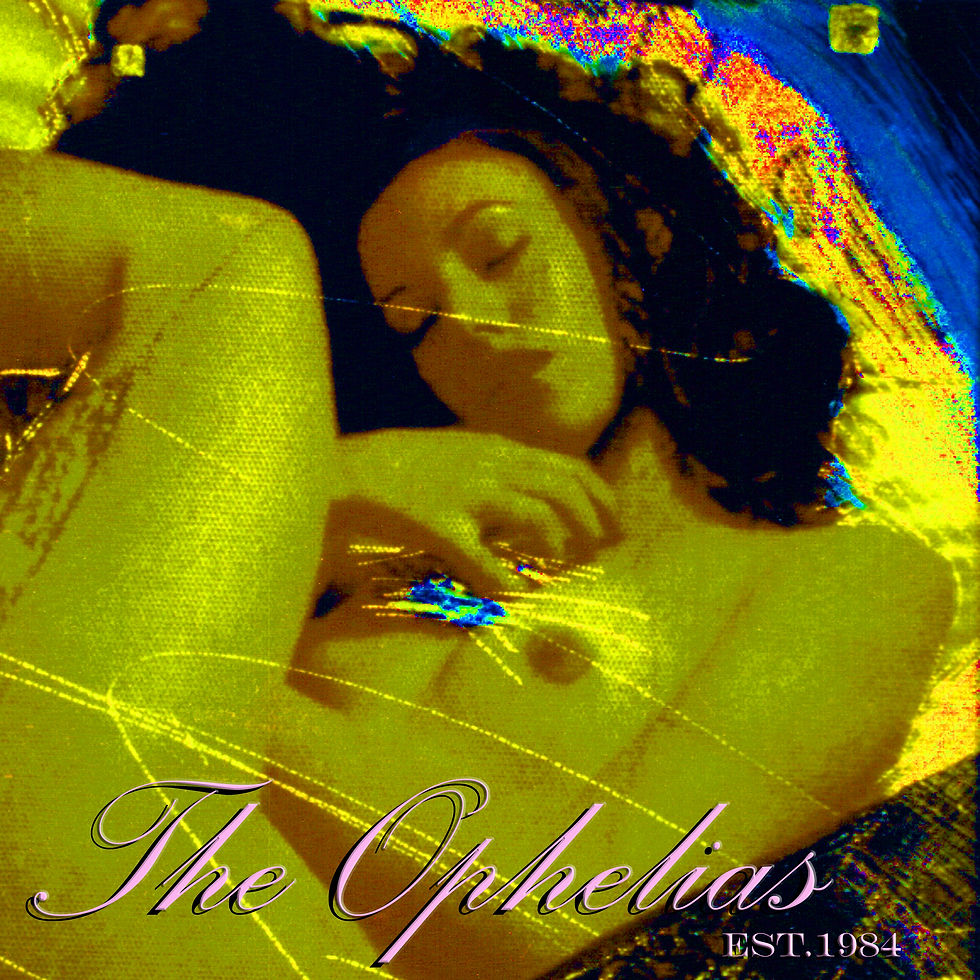
It is just lucky for fans past, present and future, that The Ophelias could count on Leslie Medford’s infallible archiving proclivities. “I saw no particular reason to open my Ophelias boxes for a long time”, he admits. “In part it was a resistance to the dark side of nostalgia which might have awaited me there, a fear of unearthing unlistenable music, bitterness, and staring failure in the face. But the school of thought whereby one should ‘never look back', or ‘never have regrets', is simply not me. I live in the past, and frankly, I am much happier for it!”.
For years, Bare Bodkin was a treat for lucky dinner guests. After that, it was an obscure jewel to stumble upon on YouTube. Now, the career-spanning retrospective has finally found a home - and a much awaited physical release - in Independent Project Records. What we hear today is Leslie’s selection of tracks from 1997. “There was always the question of where to put Mister Rabbit’, he reflects, mentioning the band’s most successful song from back in the day. “Our goal was to take the listener on a trip though. To my mind from opener Anywhere You Look to track nine (Glory Hog) there is a particularly lovely flow of music and imagery, so I think the opening twenty-seven minutes are really nice almost as a piece in and of itself. I’m also proud of what comes next, a series of four distinctive powerhouses - not ‘singles'-intended, but each its own unique adventure. The final couplet, Nocturnal Blonde and Shallows, is very Ophelia-esque, bringing it all full circle, linking nicely with those first nine tracks. There is also a reverse chronological flow, we are going back in time (generally) as we proceed. Ophelia’s breakdown is complete and illustrated by Nocturnal Blonde and then her drowning in Shallows ends Bare Bodkin”.
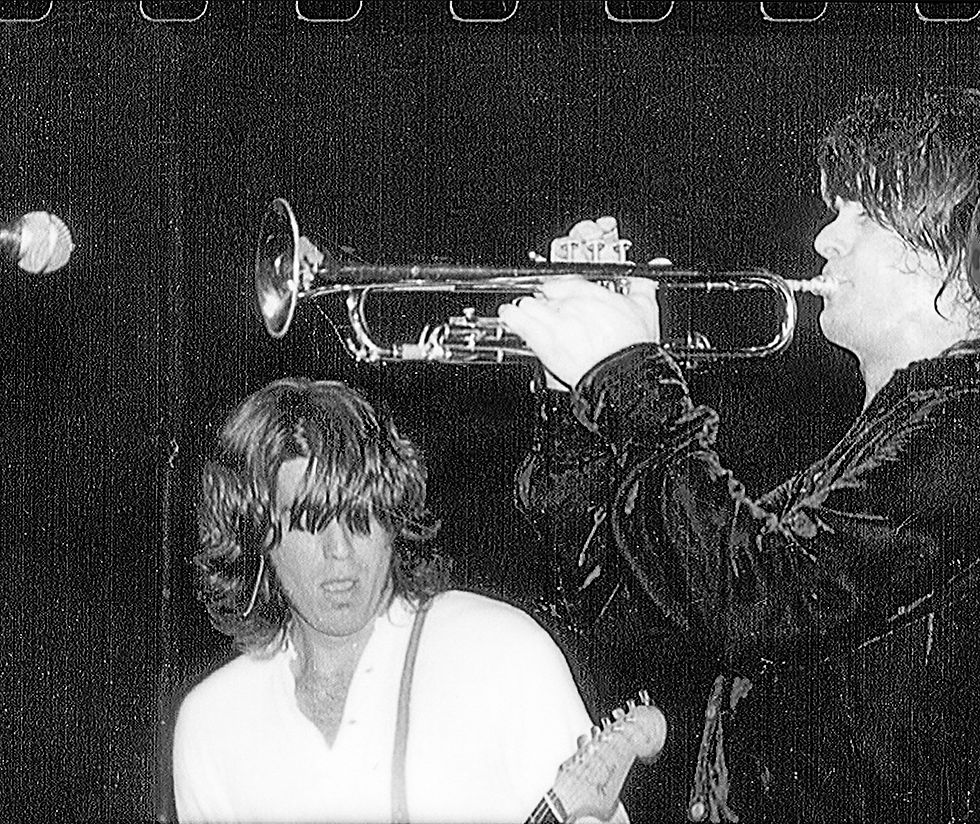
David Immerglück points to This Is My Advice to You as a flashpoint for his creative partnership with Medford. “It was just the two of us in my studio. I play this weird ambient guitar loop in it. Leslie's playing the piano and trumpet. I produced it, and listening to it now I don’t even recognise myself. How did I make those kinds of decisions, for instance about how to use the reverbs? That’s still one of my favourite recordings”.
Since The Ophelias, he has played with numerous bands (Monks of Doom, Camper Van Beethoven, Counting Crows) and proved a prolific session musician (most notably with John Hiatt). But there’s an extra sparkle in David Immerglück’s eyes when he gets to talk about his first band. “I've always loved the music we made, I had just forgotten about it.”, he confides. “The Ophelias weren’t really my first band, but certainly the first that was everything to me. It was exactly what I wanted to be doing. This new release has rekindled my pride. Now I look back on it with a modicum of success in my own career, I can just look at it for what it is, and I'm finding that it is as good as I thought it was”. Pride comes with a secret deviant smirk, he says. “Not too many bands have that wide of a palette. We were part of an indie scene in San Francisco, but there was no band like us. Maybe it’s because I’m biased, but it doesn't sound dated to me. It sounds as good as it did when we were doing it. I always say that no matter what band I'm in, I'm a card carrying member of The Ophelias”.
Bare Bodkin sounds so good, in fact, that one might start to wonder what will come next. “Leslie and I have talked about making another record because there's a lot of excellent unrecorded material, and I definitely have it in my mind to make that happen”, Immerglück reveals. “The pandemic definitely put that on the back burner, but before this is over, I believe there will be another album. And it will kick ass”.
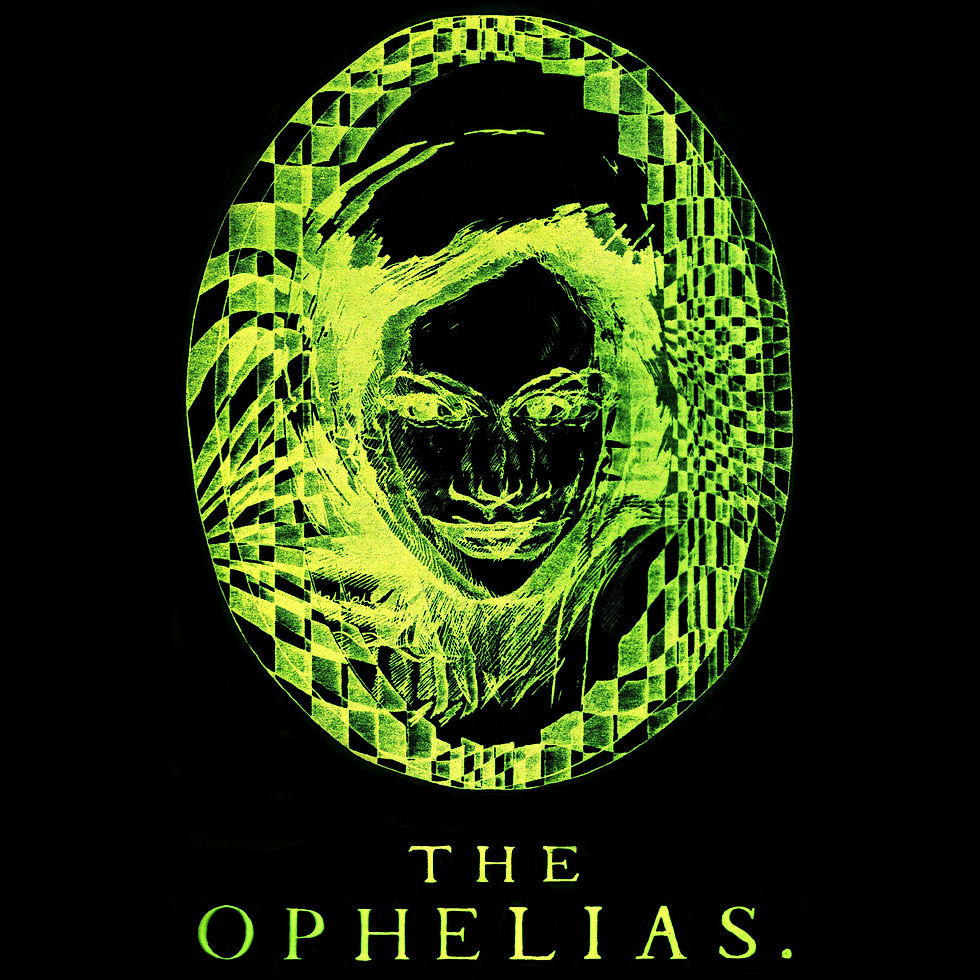
This is the second dispatch of The Notes and The Words, an ongoing series of articles by Camilla Aisa exploring the artists and music of Independent Project Records.
Painting: The Play Scene in Hamlet, Act III, Scene ii (1897) by Edwin Austin Abbey.




Thank you Camilla Aisa, Bruce and Karen Licher, and all at Independent Project Records, for this magnanimous piece! Love the images you chose and their careful placement, enhancing the words, which themselves flow most swimmingly. Very much appreciated!